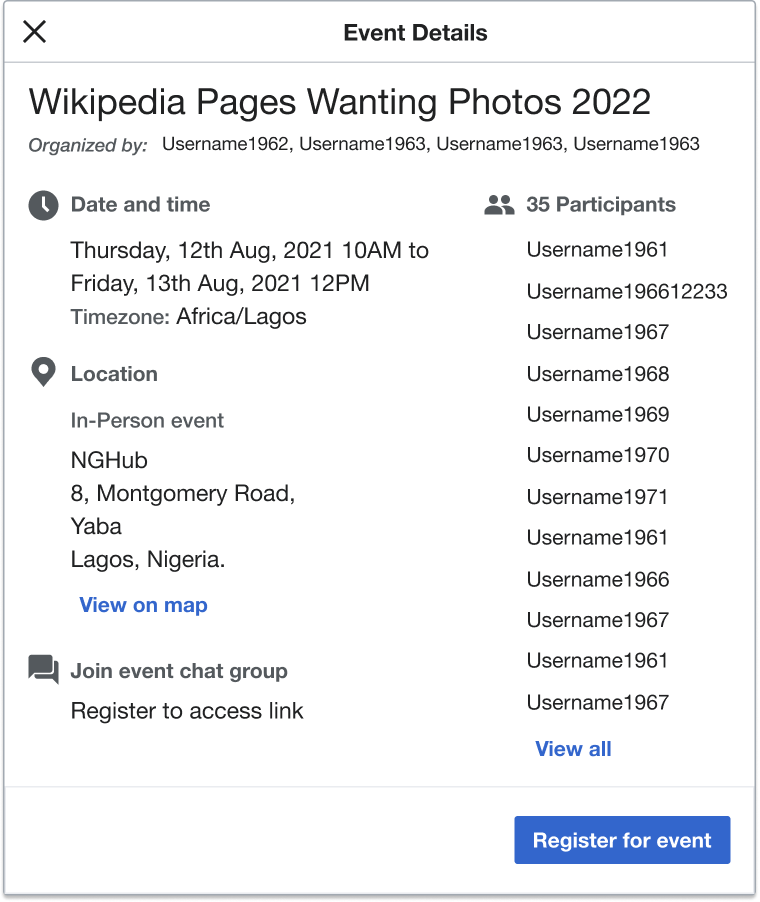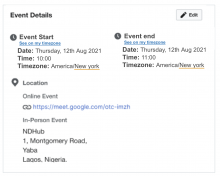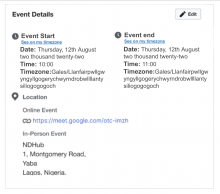Acceptance Criteria:
- Display event time zone on event page (registration header and 'more details modal) and EventDetails in the following way:
- In person events: timezone specified by organizer when configuring registration form
- Online and hybrid events:
- If user logged in: time zone set in preferences
- If user logged out: default time zone of wiki
- Time zone options include geographic time zone and UTC offset
Final decision:
Timezone design (View Design Specs)
Event details modal Event details tab
- Timezone default of wiki (if logged out)











